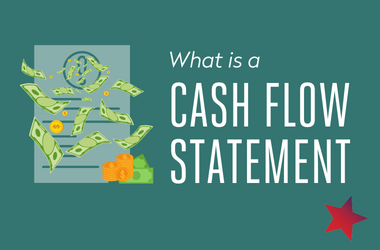Tips for Writing your First Grant Letter of Inquiry (LOI)
The Letter of Inquiry (LOI) is Crucial to the Grant Writing Process
Once you have done extensive research on prospective grant funders, (Hint: see “Essential Tips for Beginning the Grant Research Process”), it is time to start sending out proposals! Unless the funder has an online application, you will probably need to create your own proposal, which is commonly called a Letter of Inquiry (LOI). For this article, I will walk you through the basics of writing an LOI, which can be then used as a template for any other types of proposals you may encounter.
A Grant Letter of Inquiry is a short letter (2-4 pages), in which you introduce yourself and make a request to a foundation for funding. The basic format looks like this:
Grant Letter of Inquiry (LOI) Format:
1. Short introduction paragraph stating your request and why you are approaching this foundation – example: On behalf of Acme Dance Company, I am pleased to submit this letter of inquiry to XXX Foundation for an inaugural grant of $10,000 in support of our upcoming home season of premieres and news commissions serving 5,000 general public, youth and seniors in the New York City area. Given XXX Foundation’s commitment to supporting the performing arts, we thought you would be interested in learning more about our exciting award-winning dance company and upcoming performances in 2021. Below is a brief background on our organization, and a description of our request for your consideration.
2. Briefly describe the history and mission of your organization (2-3 paragraphs). Mention your mission, your major accomplishments (awards, major projects, press quotes), describe your audience/constituents (size, demographics, programs to serve them), and your marketing strategy (list platforms used, frequency of marketing and reach).
TIPS: Keep it very factual and concise. Avoid flowery language and artistic statements unless they are essential to your mission. Never praise yourself, but use press quotes or awards to show evidence of your accomplishments.
3. Description of Request (3-5 paragraphs)
This is the meat of your proposal and should be the longest section. Be sure to answer the 6 basic questions: the WHO, WHAT, WHERE, WHEN, WHY, and HOW of what you want to do. For instance, if it is for a new dance work, describe WHO is working on the project – the choreographer, collaborators, number of dancers/performers, and how they were selected. The WHAT should be a very straightforward description of the project. Don’t assume that the funder will know anything about your art form or your process. How can you help a lay person understand what you do? Avoid technical jargon, academic speak, or abstractions. The WHERE should be straightforward. Mention if you have a venue for the performance, and your connection to the local community. The WHEN is the timeline of the project. The WHY is your case for why this work is important at this moment, and for this audience. The HOW is how you will accomplish this project given the resources, time, and personnel that you have. Ultimately, you want to convince the funder that this project is both IMPORTANT and ACHIEVABLE in the proposed time frame and for the amount you are requesting.
4. Summary (1-2 paragraphs)
Give a conclusion paragraph to restate your request and tie it back to the funder’s priorities. Secondarily, you will want to list any supplemental materials you are enclosing with the LOI based on the funder’s guidelines. These may include: a copy of your IRS 501(c)(3) letter; an organizational budget; a project budget; list of funding sources; board list; staff list and bios; recent audit or 990; and literature about your organization such as recent reviews, brochures, or curricula. Lastly, be sure to thank the funder for considering your request, invite them to your upcoming performances/events, and let them know how to contact you in case they have any questions.
If you are emailing the LOI, then you will want to include a short cover email that is similar to the intro paragraph of the LOI, and lists all the attachments and their length. If you are snail-mailing the LOI, then the LOI itself will serve as the cover letter. Just draft the LOI on your letterhead and address it to the funder contact name at the top. It is also a good idea to put a footer on the bottom of each page that lists your organization’s name, the funder’s name, the page number and total number of pages for the document.
Remember to Track your Grant Letters of Inquiry (LOIs)
The last step is to note on your grants calendar/tracking sheet the date when you sent the LOI out. It can take up to 12 months to get a response back from a funder, depending on when their board meets to review submissions. Sometimes you won’t receive any reply back. Unless you have a prior relationship with a funder, you should wait to get a response from the funder. If you don’t hear back, then assume it is a rejection. Wait for one year to reapply. As a general rule of thumb, apply three times, and if you don’t get anywhere, then give it a break. If you get any response back from a funder, even if it is a rejection, ask for feedback if they are willing to give it, as this will help you strengthen your proposal the next time.
Keep Refining the Grant Letter of Inquiry (LOI) Process
Use each submission as a learning opportunity, to refine your thinking about your project, and to learn more about the funder. Get to know their staff. Invite them to your programs, and try to cultivate a relationship with them. If they like you and move to another foundation, that will widen your funding prospects. Remember that grant writing is a long-term investment in your organization that will ultimately help you achieve growth and sustainability.
NEXTSTEPS GUEST WRITER: ANNA BRADY MARCUS | 1.14.21
Anna Brady Marcus is a grant-writer specializing in institutional development for the nonprofit performing arts sector.
Latest Blog Posts
Development & Fundraising for Artists
Development & Fundraising for Artists How to Obtain Individual and Institutional Donations Development & fundraising through individual and institutional donations. Everyone needs money, and if you are an artist, nonprofit, or dance organization, a good chunk...
Top 5 Quickbooks Set-Up Tips
Top 5 Quickbooks Set-Up TipsManaging your organization’s finances can be overwhelming and time consuming. At Pentacle, we use Quickbooks, an accounting software that helps you manage your financial transactions, both internally as well as with our artists...
Understanding A Cash Flow Statement
Understanding A Cash Flow Statement What is a Cash Flow Statement? A Cash Flow Statement is a financial statement that tracks the movement of a company’s cash over a selected period of time. This is an all-inclusive statement because it includes the inflow and outflow...



